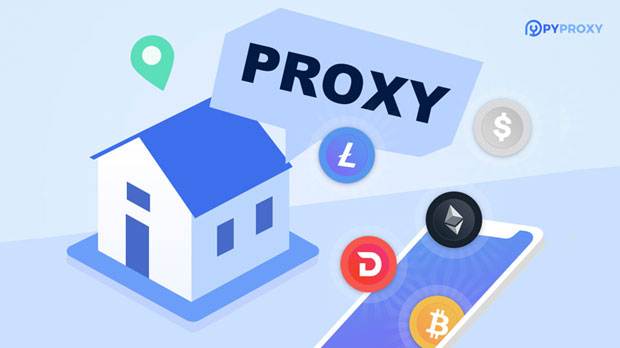Data scraping, also known as web scraping, is the process of extracting data from websites. While it has numerous legitimate applications such as market research, data analysis, and lead generation, it can often face challenges, particularly in the form of restrictions put in place by websites. One of the primary obstacles that data scrapers encounter is IP blocking or rate limiting, as websites track IP addresses to identify and block suspicious activity. To overcome this, using sock s5 proxies can significantly enhance the success rate of data scraping. SOCKS5 proxies provide anonymity, bypass geo-restrictions, and prevent IP bans, making data scraping faster, more efficient, and more reliable. This article will delve into the advantages of SOCKS5 proxies for data scraping and explain why they are a crucial tool for scraping success. What is a socks5 proxy?A SOCKS5 proxy is a type of proxy server that routes internet traffic on behalf of users. The "SOCKS" stands for "Socket Secure," and version 5 is the latest and most advanced iteration of this protocol. Unlike HTTP proxies, which only handle web traffic (HTTP and HTTPS), SOCKS5 proxies support all types of internet protocols, such as FTP, POP3, and more, allowing for broader versatility. It is capable of handling a wide range of requests, making it ideal for users who require high levels of anonymity and flexibility.SOCKS5 proxies can be especially beneficial for data scrapers as they can bypass certain restrictions set by websites, like IP blocking and rate limiting, without revealing the scrapers' true identity or location.How SOCKS5 Proxies Improve Data Scraping Success1. Enhanced Anonymity and PrivacyWhen performing data scraping, the biggest challenge is to avoid detection. Websites track IP addresses to detect and block suspicious scraping behavior. If multiple requests are coming from the same IP address in a short period of time, it raises a red flag. SOCKS5 proxies can change the scrapers' IP address to a new one each time a request is made. This allows for more requests to be sent without triggering any alarms, making it less likely for the website to block the scraper.By using a SOCKS5 proxy, data scrapers can hide their real IP addresses and use rotating IPs, making it much harder for websites to identify the scraper’s activity as a threat. This increases the success rate as it bypasses IP bans, reduces the risk of being blacklisted, and allows for continued access to the target website.2. Avoidance of IP Bans and Rate LimitingMany websites implement rate limiting to prevent bots from making too many requests in a short time. When scraping large volumes of data, this can significantly slow down the process, leading to missed opportunities or failed scraping attempts. SOCKS5 proxies allow users to rotate between different IP addresses, effectively bypassing rate limits. By distributing requests across multiple IPs, the website cannot track or limit the requests as easily, leading to a smoother scraping experience.Moreover, SOCKS5 proxies help circumvent IP bans, which are typically set up by websites to block scrapers. If an IP address makes too many requests in a short amount of time, the website may block it. However, by using a SOCKS5 proxy, the scraper’s requests come from different IPs, making it harder for the website to impose effective bans.3. Increased Scraping Speed and EfficiencySOCKS5 proxies improve the speed of data scraping by allowing for parallel scraping operations. Since each request is routed through a different IP address, scrapers can send more requests in a shorter amount of time. The ability to rotate IPs, combined with faster connection speeds, enhances the overall efficiency of scraping operations. This is especially useful when scraping large datasets or multiple websites at once.Additionally, SOCKS5 proxies can provide better performance for users in regions with slow internet connections or geo-restricted access. By selecting SOCKS5 proxies from servers located in different regions, scrapers can minimize latency and improve their connection speed, ultimately increasing the success rate of the data scraping process.4. Geolocation FlexibilityGeolocation plays a critical role in data scraping, particularly when scraping region-specific data or dealing with geo-restricted content. Some websites limit access to users based on their geographic location, while others display different data depending on the user's location. SOCKS5 proxies provide an excellent solution by allowing scrapers to choose the geographic location of their IP addresses.By using SOCKS5 proxies located in different regions, scrapers can appear as if they are browsing from any country or city. This geolocation flexibility enables scrapers to access content that may otherwise be restricted to certain areas. It also allows for region-specific data scraping, ensuring the accuracy and relevance of the collected data.5. Reduced Risk of Detection by Anti-Scraping TechnologiesWebsites implement various anti-scraping measures such as CAPTCHA challenges, JavaScript checks, and behavioral analysis to prevent bots from scraping their data. SOCKS5 proxies help reduce the risk of detection by anonymizing the scraper’s activity and making it harder to link requests to a single source.By using SOCKS5 proxies, scrapers can rotate through a pool of different IP addresses, mimicking human-like behavior and avoiding triggering anti-scraping mechanisms. This enhances the success rate of scraping, as it reduces the chances of getting blocked by the website’s defenses.6. Better Control Over Scraping OperationsSOCKS5 proxies offer greater control over scraping operations. Users can select proxies based on specific criteria such as location, bandwidth, or IP rotation frequency. This level of control enables scrapers to optimize their operations for better results. For instance, if a website is known to be more restrictive with users from certain countries, the scraper can use SOCKS5 proxies from different regions to avoid detection.Moreover, SOCKS5 proxies offer more flexibility when dealing with different websites. While some websites may block certain IP addresses or impose stricter limitations, using SOCKS5 proxies ensures that scrapers have the tools to handle a variety of challenges efficiently.Using SOCKS5 proxies significantly enhances the success rate of data scraping by providing anonymity, flexibility, and control. They enable data scrapers to avoid IP bans, bypass rate limiting, and reduce the risk of detection by anti-scraping technologies. By leveraging the power of SOCKS5 proxies, scrapers can improve the efficiency, speed, and reliability of their operations, ultimately leading to better results.In today's data-driven world, where timely and accurate data collection is crucial, utilizing SOCKS5 proxies is an essential tool for successful data scraping. With the ability to rotate IPs, bypass restrictions, and maintain anonymity, SOCKS5 proxies empower scrapers to access valuable data more effectively and without interruptions.
Mar 31, 2025
![arrow]()




























































